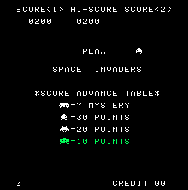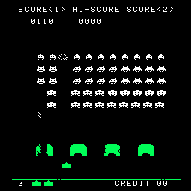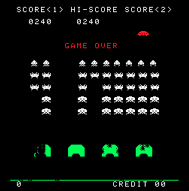Narrative/Games
BACK
When we are urged to "play Space Invaders", it does imply a minimal story. The concept of invasion presupposes a time before the invasion, and from the 1950's science fiction it draws upon, we just know that these aliens are evil and should be disposed off. So there is a story, and from the title screen we know all of it: Earth attacked, Earth freed from the alien menace. This is the basic mode of the classical action game: A cliched story with a well-known ending, and a game that actually never reaches that ending, it just gets harder and harder.



- Narratives are fixed sequences, games are flexible sequences.
- Narratives vary in the speed with which they are told; uninteresting periods of time are skipped; the movie 48 hours doesn't last 48 hours. Computer games, especially the action game, are fixed speed, real time.
- A narrative has a dualism between the story and the discourse, the computer game is divided between the formal program and the material.
- A narrative is basically something past, a computer game something present.
- A narrative needs human or anthropomorphic actors, a game can be abstract. You can’t imagine a narrative as abstract as Tetris.
- In a narrative, the reader desires to know the ending. In a game, the player wants to understand the structure of the game and to acquire the skills to use this knowledge.
- A narrative is something you consume once, a game is something you play many times.
An Interactive fiction, such as a Choose Your own Adventure book, an interactive movie like Urban Runner or Wing Commander III, or any kind of "interactive story" works by switching between two temporal modes, the narrative mode and game mode.
References
Click to view websites
Roland Barthes: Image, Music, Text. Fontana, 1977.